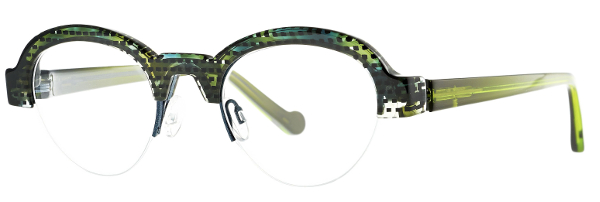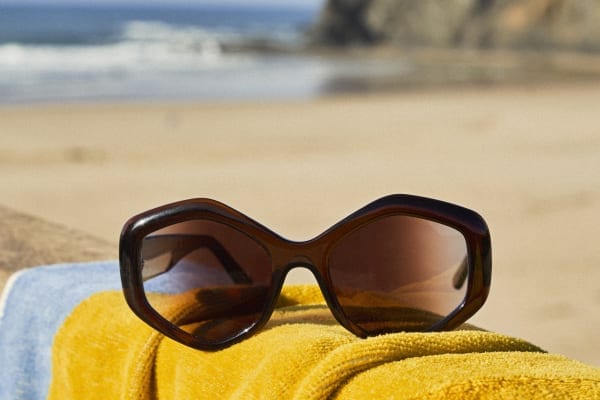The new collection draws inspiration from three bridges in Antwerp

The ‘Antwerp Bridges’ collection combines acetate, stainless steel and nylor in a unique way. The stainless steel core is enveloped in acetate. The temples stay flexible thanks to the flex-system developed in-house at theo and they flow seamlessly in a single line. Just like a bridge, these glasses look heavy on the top but open and airy on the bottom. Each model is available in 8 – fairly subdued – colours. But they’re 100% unmistakable theo thanks to the abundant use of our own acetate plates.
Nassau – the frames
A bold model for both men and women. Robust and rectangular. The Nassau bridge is the oldest bridge in the Port of Antwerp, built in 1867. It’s a swing bridge with a 16 m wide berth. The bridge was completely restored in 2004 and these days rarely needs to be opened. The bridge is a protected monument and is only used by cyclists and walkers. The Nassau bridge brings you to the main entrance of the MAS, (Museum Aan de Stroom), located on ‘het Eilandje’, the waterfront district of Antwerp.
Royers – the frames
Royers is a soft, cat-eye model. Upbeat and feminine! The Royers bridge, named after Antwerp’s municipal engi-neer Gustaaf Royers (1848-1923), is a combination rolling bridge and a bascule bridge. The actual bridge also forms the south sluice gate. In open position, it recesses into a slot in the east quay, when closed, the slot is covered by a bascule bridge. When the sluice gate is opened (for ships to pass through) this bascule bridge hangs over the sluice gate.
Siberia – the frames

A fairly round model, for those who don’t take themselves too seriously. Around 1947, the original Siberia hydraulic swing bridge was re-placed by two electric bascule bridges, each with 2 traffic lanes. The south bridge was then demolished in 1991 and replaced by a drawbridge in 1997. During hot summer weather, the bascule bridge is temporarily left open, while the drawbridge section remains in use. The old steel bridge construction expands too much under high temperatures, and no longer fits back into place.







